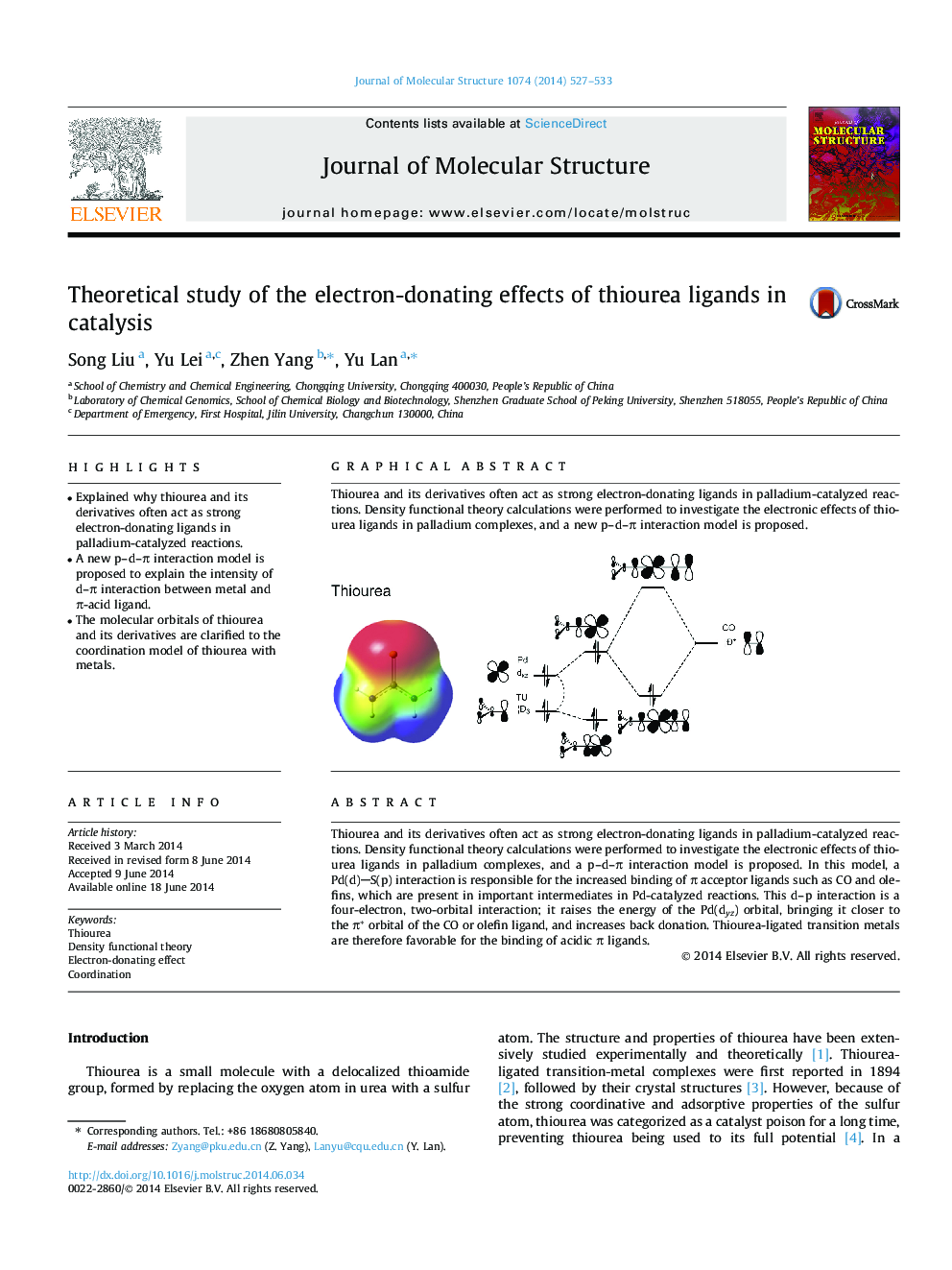| Article ID | Journal | Published Year | Pages | File Type |
|---|---|---|---|---|
| 1402404 | Journal of Molecular Structure | 2014 | 7 Pages |
•Explained why thiourea and its derivatives often act as strong electron-donating ligands in palladium-catalyzed reactions.•A new p–d–π interaction model is proposed to explain the intensity of d–π interaction between metal and π-acid ligand.•The molecular orbitals of thiourea and its derivatives are clarified to the coordination model of thiourea with metals.
Thiourea and its derivatives often act as strong electron-donating ligands in palladium-catalyzed reactions. Density functional theory calculations were performed to investigate the electronic effects of thiourea ligands in palladium complexes, and a p–d–π interaction model is proposed. In this model, a Pd(d)S(p) interaction is responsible for the increased binding of π acceptor ligands such as CO and olefins, which are present in important intermediates in Pd-catalyzed reactions. This d–p interaction is a four-electron, two-orbital interaction; it raises the energy of the Pd(dyz) orbital, bringing it closer to the π* orbital of the CO or olefin ligand, and increases back donation. Thiourea-ligated transition metals are therefore favorable for the binding of acidic π ligands.
Graphical abstractThiourea and its derivatives often act as strong electron-donating ligands in palladium-catalyzed reactions. Density functional theory calculations were performed to investigate the electronic effects of thiourea ligands in palladium complexes, and a new p–d–π interaction model is proposed.Figure optionsDownload full-size imageDownload as PowerPoint slide
